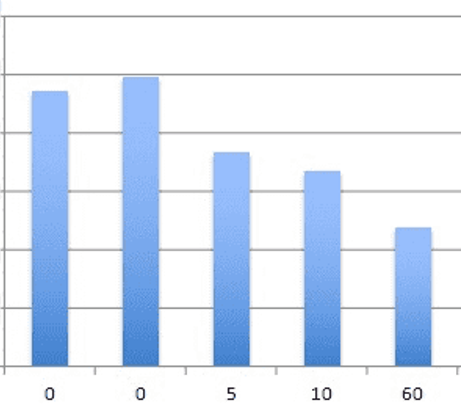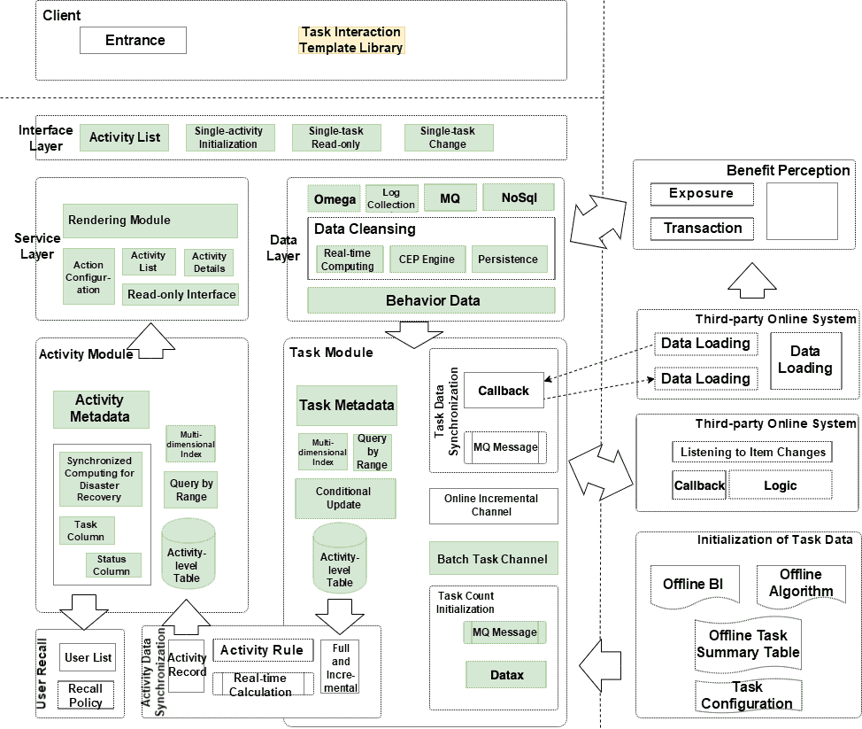By Wan Xiaoyong, nicknamed Wubai at Alibaba.
Xianyu is a popular second-hand buy-and-sell platform started by Alibaba. As the platform as grown, we have seen a trend, which is that, as the activity of sellers increases, the ratio of successful transactions also increases, which in turn also grows the number of users on the platform as a whole. To all of this, the key is transaction efficiency. However, given the nature of the second-hand market, individual sellers make up the majority of sellers, and as one would expect individual sellers tend to have a much lower transactions efficiently than that of professional sellers. This, of course, makes sense, as most individual sellers probably do not consider selling their used items as their main source of income. Therefore, as platform creaters, At Alibaba, we want to be able to help sellers improve their transaction efficiency, and quickly add more scenarios for sellers.
By analyzing online data, we found some interesting phenomena. For example, we found that more users, which are, strategically speaking, potential sources of traffic, are likely to access the homepages or items of sellers that use real profile pictures. Moreover, we also found that sellers that actively respond are more likely to complete transactions. And, last, we also found that items that are closer to users or that have more detailed descriptions are more likely to be sold.
The activity of sellers is closely related to the sellers will actually complete transactions. Therefore, we need to increase the online activity of sellers based on the number of transactions they make. Our observations have shown that sellers' behaviors may have major or minor impacts on transactions. Therefore, our work needs to take these different behaviors into account.
The aim of sellers, naturally, is to complete transactions. Therefore, with the goal of completing transactions in mind, we perform a round of simulation based on an online algorithm model by using two key metrics.

For reasons of confidentiality, this algorithm is only described in simplified terms. In this article, we will be focusing on the engineering side of this algorithm. We will be defining four elements of sellers' behaviors on Xianyu, which are the when, where, what, and who of the seller's behaviors. As you would expect, the when and where define the temporal and spatial dimensions of a seller, that is, where is the seller located in China and when did he or she list his or her posting on the platform, so on. Next, what describes content of the seller's behavior, including what the seller is actually buying, and, last, who indicates the entity, that is the seller himself or herself, who conducts the behavior. Information related to the seller can be found based on his or her profile information on the platform.
Thinking relatively broadly, it is generally quite easy to describe the behaviors of a seller. However, it is not so easy to correctly identify the behaviors of the seller. What do we mean by this? Well, consider this. The complete reply behavior of a seller can be split as follows:
The three behaviors above must meet the following constraints:
To this end, we use complex event processing, or CEP to match a complex event model. After comparing Siddhi and Flink CEP based on size, flexibility, and cost, we selected Siddhi as our CEP engine in the early phase.

The above figure shows the simulation results of the algorithm based on the two metrics. Data is desensitized for security reasons. The larger the number on the vertical axis, the more transactions completed. The horizontal axis shows the multi-dimensional characteristics about the seller based on the online status and reply behaviors of the seller. From the simulation results, we can see that sellers who are online and actively respond are more likely to complete transactions. This also shows that sellers' behaviors do have a potential impact on transaction efficiency.
The results of the preceding analysis indicate that we are going in the right direction, but it is far from enough. For example, consider these problems. How can sellers identify behaviors that are helpful for completing transactions? And how can sellers perceive the positive benefits of these behaviors?

Here we will be focusing on promoting sellers to complete transactions. Therefore, the core idea is to build the preceding closed loop to cultivate attentive and stable sellers and help them rapidly complete transactions.
Our core path is guiding sellers > seller behavior > benefits > perception of benefits. Based on this core path, we designed the activity, task, and data collection modules. For this, an activity is associated with several tasks and serves to guide sellers. A task is used to standardize seller behaviors. Last, data is used to identify seller behaviors.
Moreover, we will comply with the following principles in the entire implementation process. First, the modules are decoupled from each other. For this, the implementation depends on many external systems, with clear boundaries and minimal coupling. Second, each module assumes a single role. The core of the entire system is data streaming. The simpler the system, the more stable it is. We want to reduce maintenance costs and risks.
With this, we hope to achieve two goals. The first goal is to help sellers improve their transaction efficiency, and the second one is to quickly add new scenarios to our buy-sell platform of Xianyu.
The following figure shows the overall architecture used.

The activity module helps a seller to perform corresponding actions and provides corresponding interest points. It is used to:
Although tasks can be synchronized from the lower-layer synchronization channel to the activity module, a mechanism is required to calculate task-level activity data in real time when the channel is abnormal. In fact, the overall system performance degrades when disaster recovery calculation is started.
The task module is used to define encouraged seller behaviors in order to achieve the following:
The data synchronization channel synchronizes data from the task module to the activity module based on activity metadata. Two synchronization modes are supported: full and incremental synchronization.
Besides this, idempotence operations are performed. The operations can be repeated without affecting the final result. Full synchronization and incremental synchronization are isolated and do not affect online services.
The data layer needs to converge the behavior data of the platform sellers. Differences in business complexities lead to diversified data sources. First, Standard data is derived from the Omega system developed inhouse for Xianyu. Second, differentiated data is derived from diversified data sources, including log collection, Message Queue (MQ) messages, and persistent storage facilities.
Data is converged based on the four elements of seller behavior in Xianyu we mentioned earlier. After that, the data needs to be normalized and mapped to standard behavior data. Due to the differences in data magnitude and complexity, we use different methods to identify data based on the different complexities of behavioral data.
In addition to the three modules mentioned above, we have also added the following features:
So far, we have implemented similar item association, a traffic distribution model based on seller behavior, specifically online status metric and reply data statistics and real profile pictures.
The test data on bucket-based traffic distribution based on seller behavior shows that transaction conversion has increased by 3%. At present, the development personnel are not required when adding a new scenario, and the new scenario can be quickly implemented in the system as long as the operation personnel explore key behavior data.
The closed loop of seller behavior means constant feedback. The logic of this closed loop requires us to better understand sellers and learn more about how to describe their behaviors. Behavior data allows us to better understand sellers. But in the future we need better seller behavior data and feature vectors to serve as the underlying infrastructure.
Moreover, with a complete seller behavior feature library, we need to find behavior points that are more valuable to sellers and help us provide better guidance to them. Different sellers will benefit from different information, so we must take an individualized approach.
The current benefit feedback mechanism is simple. Increasing a seller's perception of behavior interest points helps cultivate more attentive and stable sellers. But, really, understanding sellers is only the first step. In the e-commerce field, both customer-to-customer and customer-to-business scenarios are focusing on shopping guide and personalization features. Such increased level of personalization helps maximize the traffic value, which is also full of uncertainties. As such, a definite understanding of sellers is very helpful for matching traffic and performing seller operations.
How Xianyu's Underlying Architecture Evolved to Support Growing Business

56 posts | 4 followers
FollowXianYu Tech - March 11, 2020
XianYu Tech - November 4, 2019
Alibaba Clouder - December 6, 2019
Alibaba Clouder - October 26, 2018
Alibaba Clouder - April 13, 2020
Merchine Learning PAI - October 30, 2020

56 posts | 4 followers
Follow Platform For AI
Platform For AI
A platform that provides enterprise-level data modeling services based on machine learning algorithms to quickly meet your needs for data-driven operations.
Learn More Epidemic Prediction Solution
Epidemic Prediction Solution
This technology can be used to predict the spread of COVID-19 and help decision makers evaluate the impact of various prevention and control measures on the development of the epidemic.
Learn More Realtime Compute for Apache Flink
Realtime Compute for Apache Flink
Realtime Compute for Apache Flink offers a highly integrated platform for real-time data processing, which optimizes the computing of Apache Flink.
Learn More AI Acceleration Solution
AI Acceleration Solution
Accelerate AI-driven business and AI model training and inference with Alibaba Cloud GPU technology
Learn MoreMore Posts by XianYu Tech